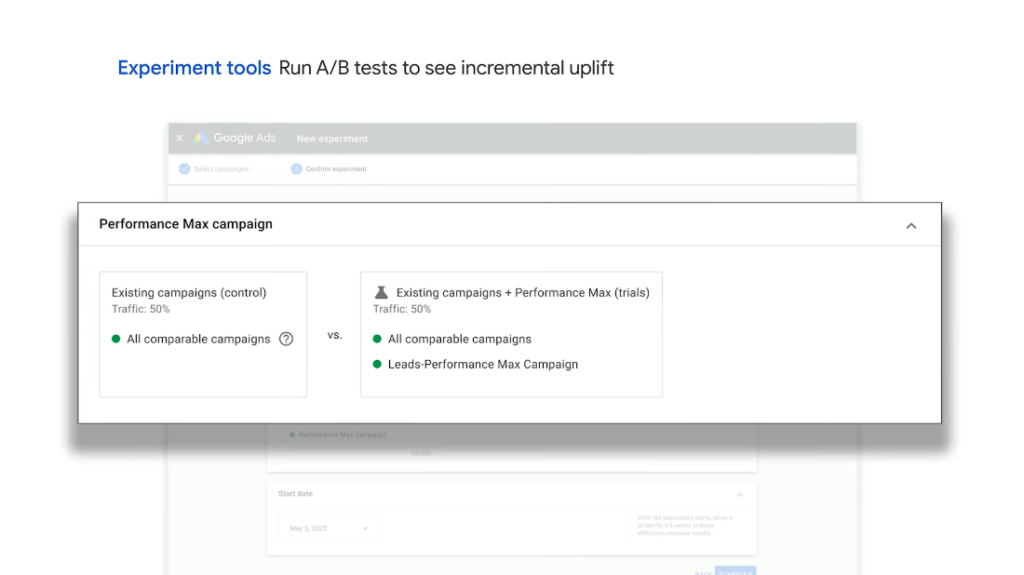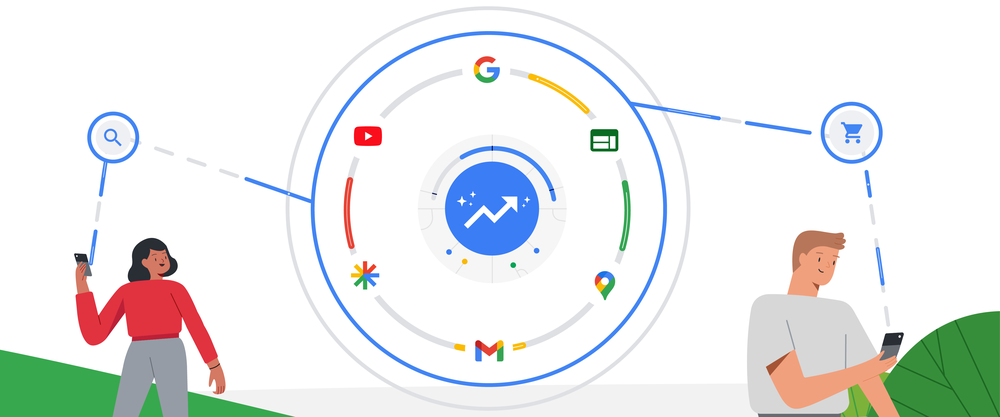Last May, Google announced at Google Marketing Live 2022 all the new marketing features planned for this year; some have already been rolled out, some are in the process of being implemented, but there are others that have yet to launch.
The main changes will affect the different Google campaign types: Search, display, video, Performance Max and programmatic.
Market trends are clear: users are increasingly relying on digital to make purchases decisions, even when they are physically inside a brick and mortar store. There are two facets to this tendency. On one hand, consumer behavior is becoming more frenetic and at the same time there are a dizzying number of channels and manners to impact consumers both physically and digitally.
Google is betting big on the integration between the online and offline worlds with its upcoming features for the “omnibuyers”, customers who shop seamlessly across multiple channels, whenever they want, on or offline. One of these new features will allow the customer to scan products on the store shelf in real-time with their phone, getting useful information instantly. This will help business to grow, setting more specific goals and even bidding for sales in the brick and mortar store, blurring the lines between digital and physical.

Changes to Search Campaigns
This type of campaign continues to be the main way in which users research the products or services they are interested in.
Google is committed to automating search and brings us three new features in three different areas:
- Smart Bidding: because smart bidding works much better when we give the algorithm more information, a series of changes are being implemented to conversion setup. On average, this type of bidding strategy leads to 14% more conversions than manual bidding campaigns, according to Google sources.
Our business can have different types of conversions and they don’t all have to have the same value assigned to them. Now it’s possible to change the value assigned to each conversion within campaign settings.
To help us set this value, Google Tag will let us know which conversions are more valuable and the value that should should be assigned to each. In addition, we can adjust conversion rules to assign more or less value according to different parameters, such as location, customer type or their device. location.

Lastly, Google has also rolled out a feature to make measuring the conversions more precise.
- More broad match: Google is focusing on better understanding of user search intent, which will allow advertisers to reach more users by covering a larger number of relevant searches.
In addition, several advertisers who have shared their data have seen conversions increase up to 35% in campaigns with CPA bidding strategies and up to 20% with target ROAS strategies when they switched from exact to broad match.
- Responsive ads: these campaigns show the “best” ad to each user according to buyer intent. By combining responsive ads with broad match, we maximize results by impacting a larger number of relevant searches.

Near term plans for these campaigns include automatic asset creation where ads can be automatically created based off landing page content, in order to improve relevancy and limit the amount of time PPC managers spend crafting ads.
Changes to Display Campaigns
According to Google, consumers are more likely to purchase if we offer them relevant experience and value-added interaction.
In this vein, Google has planned the following updates to Display campaigns:
- More attractive ads: adaptive Display ads that combine different assets based on performance, achieve up to 100% more conversions than standard ads. New formats will be released in order to take advantage of the whole screen, adapting vertically to smartphones or eliminating white spaces to create more effective mosaics.
- New ad types: Google is launching draggable ads and video ads based off of product feeds. These ads will be available in Display and Performance Max campaigns (more on this later).
- New privacy measures: as data protection is of increasing concern to users, Google is reducing dependency on third-party cookies and associated interruptions on-site through machine learning and the new Google Privacy Sandbox.
- Smart Display and more traditional Display campaigns have been merged: the focus is now on automation (as in Search) but with all the configuration options we are used to.
- In the future, Google will release a new KPI: Engaged-view Conversion, to give more data and context to conversion tracking.
Changes to Video
As in is the case with most digital channels, the trend is towards more video. Gone are the days of a clear-cut channel route to conversion and, according to Google’s data, users who visited at least five channels made twice as many purchases and spent twice as much on average, compared to shoppers who used only one or two channels. A key platform in this mix is YouTube.
For starters, it will now be easier to have a notion of how campaigns may perform, either with the current Performance Planner or in the future with the Reach Planner.
As with the previous campaign types, measurement and coverage has been improved to garner even more insights on video campaign conversions.
Following the launch of YouTube Shorts, advertisers will now be able to show ads between each video. This should be an effective and high-interaction ad type, due to the high number of users.

We’ll also be able to link our product catalog to these campaigns, so that the user can buy directly rom video. In the future, product catalogs will also be a function in Shorts and YouTube Search.

360 and Programmatic Campaign Updates
The most important changes are the following:
- Smart TV: New demographic and other audience targeting options are coming soon.
- Audio ads: with improved options to accommodate podcasts on YouTube and Google partners.
- Machine Learning, Automation and IA: as we’ve seen in all the previous Campaign types, there has been big advances in Campaign creation automation and machine learning for daily optimizations.
Performance Max Campaign Changes
Last but not least is Google’s star this year: Performance Max. These campaigns bring together much of Google’s best ad tech and continue to improve by leaps and bounds.
Until now setup and views for these campaigns was fairly limited. For this reason, Google is launching the following updates:
- The possibility of migrating Smart Shopping and Local campaigns. All the historic learnings of your campaigns, including setup and budgets will be transferred.
- The possibility to set “Customer Acquisition” as an objective.
- More audience data for better understanding of how each audience performs.
- New features to optimize and improve results.

- Google Ads Editor integration.
- More detailed view of the conversion funnel.
- More campaign objective configuration options.
- In Zapier, we can import offline conversions from Google Ads.
- Ability to create experiments.

- Customize form questions.
- More extension types, in addition to the existing extension options.
- A new data view page so we can see which channels a user has visited, reducing some of the black box nature of Performance Max campaigns.
We’ll continue exploring updates to Google Ads in future posts in our blog. If you are interested in taking advantage of all the latest features in Google Ads, stay tuned or contact All Around to see how we can help improve your marking results.
More posts about: Generate more leads







